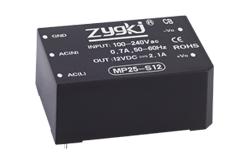
news
The original power module also need to heat?
Author: Zhongyiguang .Ltd release time:2021-02-24 15:35:06CTR:
There are three methods of heat dissipation of power module heat pipe: heat convection, heat transmission and radiation source. In specific application, most of them choose heat convection as the key heat pipe heat dissipation method. If the design scheme is suitable, combined with two heat pipe cooling methods of transmission and radiation source, the actual effect will exceed the profit maximization.
But if the design is not good, it can lead to counterforces. Therefore, when designing the power supply module, the design of heat pipe heat dissipation management system has become a key step.
1, convection heat dissipation mode
Heat convection heat pipe heat dissipation refers to the heat through the fluid mechanics material gas transmission, and then exceed the actual heat pipe heat dissipation effect, is the common heat pipe heat dissipation way. Heat convection methods are usually divided into two kinds: forced heat convection and natural heat convection.
Forced heat convection refers to heat transfer from the surface of the hot block to the fluid gas, and pure natural heat convection refers to heat transfer from the surface of the hot block to the surrounding gas with lower temperature.
The advantages of choosing pure natural heat convection are simple implementation, low cost, no need for external cooling fan and high credibility, mandatory heat convection in order to exceed all normal application of the base plate temperature, it needs a large volume of heat pipe radiator, occupies the application of indoor space.

2, conduction heat dissipation mode
In the application of the power module, the heat on the base steel plate should be transmitted through the heat transfer components to the heat pipe heat dissipation surface far away, so that the temperature of the base steel plate will be equivalent to the heat pipe heat dissipation surface temperature, the temperature of the heat transfer components and the temperature of its two contact surfaces.
This kind of method can carry out the evaporation of energy in a reasonable indoor space to ensure that the components can work normally. The heat transfer coefficient of heat transfer components is proportional to the length, and the cross section and heat transfer rate between them are inversely proportional.
If the size of the installation interior space and its cost are not taken into account, the heat pipe radiator with the least thermal resistance should be selected. Because the base steel temperature of the power supply decreases a little, the mean time without problem will be significantly improved, the reliability of the power supply will also be improved, and the service life will be longer.
relevant information
- The original power module also need to heat?
- How to solve the low output voltage of switching power supply module?
- How to deal with the difficult problems in the use of switching power supply
- How to solve the problem of internal and external interference of switching power supply?
- Why choose DC-DC power module
- The importance and structure of DC - DC power module
- How to choose DC-DC power module
- How should the DC-DC power module be tested?
- How to select the switching power supply? Three elements must be present
- Switch on power supply to make electricity more safe and convenient
6000+ options, one-stop power supplies solutions
